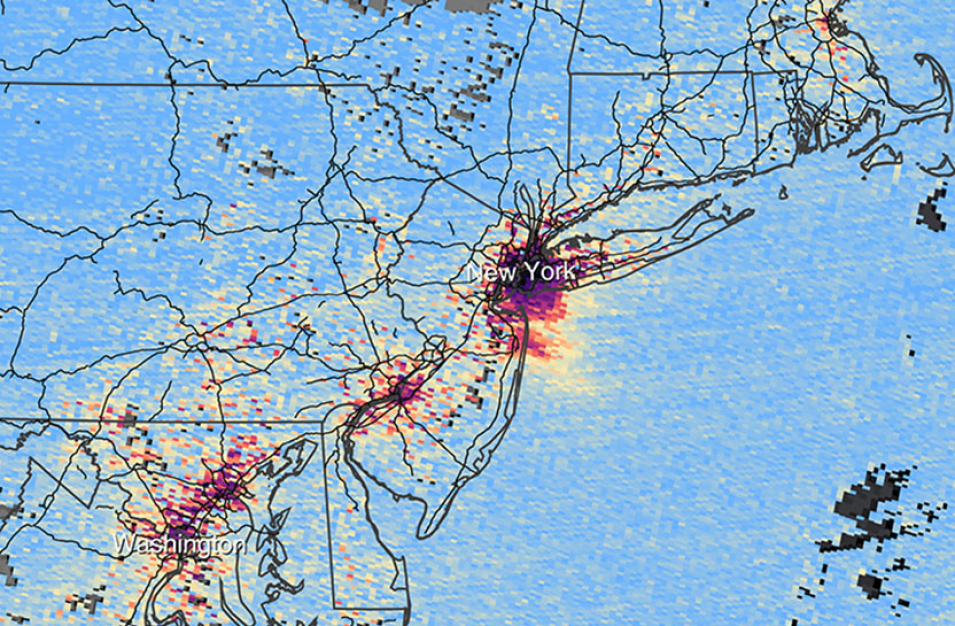On August 2, 2023, The Tropospheric Emissions: Monitoring of Pollution (TEMPO) instrument collected its first six scans of the atmospheric gases and particles floating over North America. The visualizations NASA released of these first-light nitrogen dioxide data were detailed and vibrant in their depiction of nitrogen dioxide levels across the continent, and provided eye-popping evidence for what a powerful tool TEMPO will be for understanding and reducing air pollution.
The TEMPO instrument is designed to record hourly measurements of pollution across North America during daylight. Technically, TEMPO is a high-resolution, UV-visible spectrometer that measures direct and reflected sunlight from its perch aboard the Intelsat 40e geostationary communications satellite orbiting in synch with the United States. Scientists are using TEMPO to collect data for measuring atmospheric concentrations of ozone (O3), nitrogen dioxide (NO2), and other major pollutants. These data will help pinpoint areas of pollution or their sources to improve air quality forecasting, protect public health, understand climate processes, and other important science. The mission is a collaboration between NASA and the Center for Astrophysics | Harvard & Smithsonian (CfA) in Cambridge, Massachusetts.
Processing the Data
The story of how TEMPO’s first-light visualizations were made begins with Dr. Caroline Nowlan, a CfA atmospheric physicist on the TEMPO team. Nowlan performed the first checks and calculations on the data to process them into meaningful NO2 measurements. The data were processed to NASA’s Level 2 standard and included geolocated measurements of trace gases and clouds.
“The data were geolocated with Geostationary Operational Environmental Satellites [GOES] data, then processed in three somewhat distinct steps,” said Nowlan. “The first step was finding what’s called the slant column density, which is the total amount of gases absorbing or scattering sunlight through a column of the atmosphere.”
The next step was to convert that measurement to a vertical column so that the total amount of NO2 over a particular location through the entire atmosphere could be determined. This is done by performing calculations to determine the air mass factor, which describes the ability of photons to freely travel through the atmosphere.
The final step was to subtract the levels of NO2 present in the stratosphere to determine how much of the gas was present in the lower troposphere, where it’s a harmful pollutant.
From there, Nowlan was ready to share the data with the staff of NASA’s Scientific Visualization Studio (SVS) at Goddard Space Flight Center in Greenbelt, Maryland. The SVS team are experts in computer and Earth science, aerospace, digital animation and other fields, and use their expertise to produce visualizations, animations, and images that promote a greater understanding of Earth and space science. The studio works closely with scientists—both within the NASA community and within the broader academic research community—to create high-quality, data-backed visualizations.
“I was really lucky because they're used to working with NetCDF-formatted files already,” said Nowlan.
NetCDF, or Network Common Data Form, is a popular file format for storing multidimensional scientific data such as temperature, humidity, pressure, wind speed, and many other measurements. “I provided them with the same TEMPO data files our science team uses. It was really easy to work with them,” said Nowlan.

